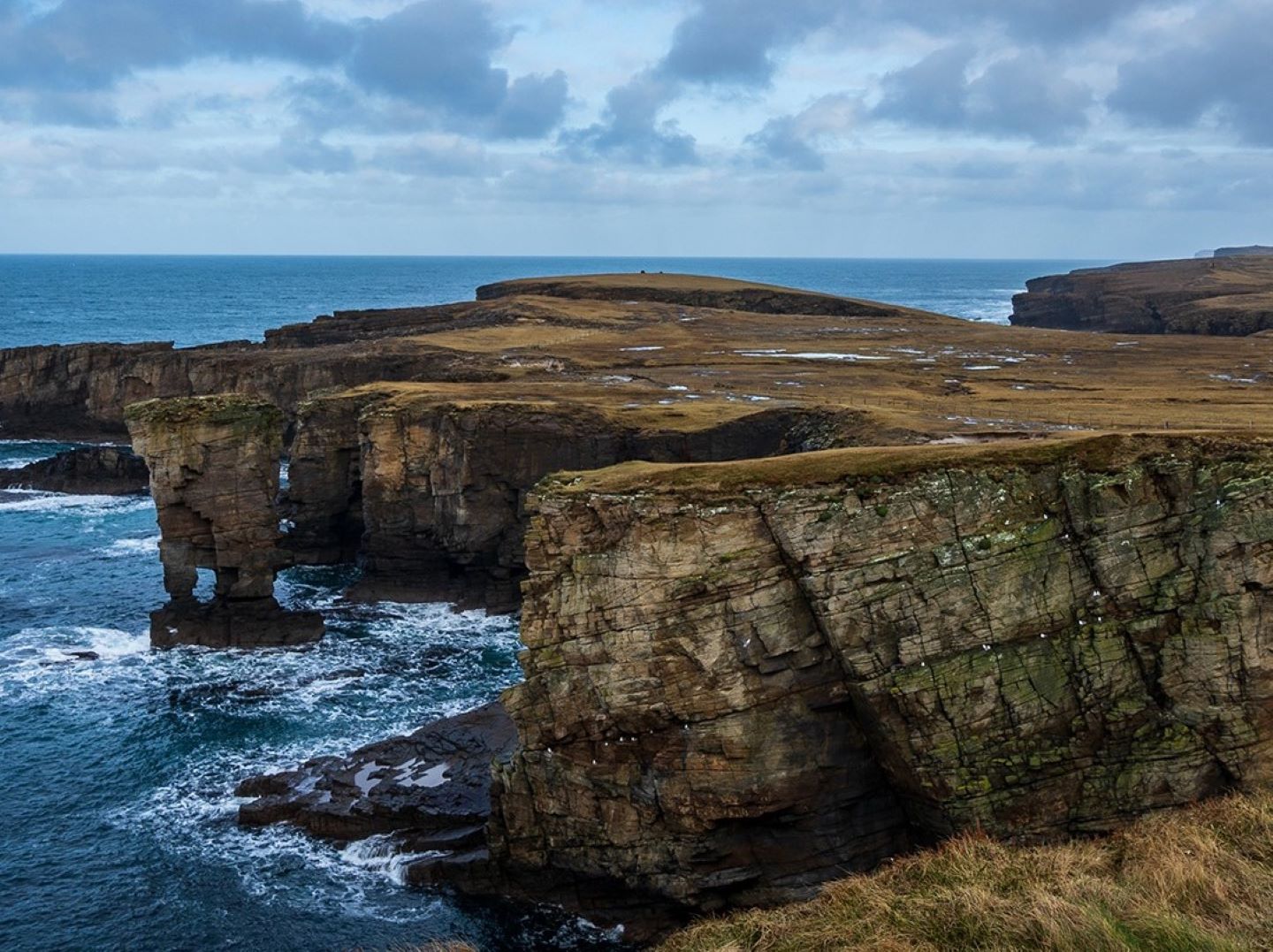
Yesnaby Cliffs, formed by fossilised stromatolites, battered sea stacks and blowholes (Photo: Highland Park Distillery)
Whispers of breath were rising in the air on a cold night in June. A waitress was filling our wine glasses with such luxuriant slowness that we were afforded a great moment to ponder the burning ball of plasma outside the window. The Northern Hemisphere was about to enter the summer solstice, and the sun was working overtime. So it was not a surprise to see mounds of haggis — browned and sliced from an engorged parcel of offal boiled inside a sheep’s stomach — still making their rounds in a bar at 10pm to satisfy one’s wayward cravings.
You know you are in Scotland when the least attractive parts of an animal’s body are celebrated with the fanfare of bagpipes. But things are taken down a notch in Orkney, a cluster of 70 islands (two-thirds of which are uninhabited) just 16km off the northern coastline where its residents, Orcadians, view cultural tokens such as kilts and “the pipes” as an affectation. Men have occupied this archipelago encompassing Neolithic sites, vertiginous sandstone cliffs and a past informed by Scandinavian settlers for at least five and a half millennia before it joined the big Caledonia in 1472. This Unesco archaeological goldmine is believed to have been the base for Viking raids on the British Isles.
img-3795.jpg

Orkney’s 5,000-year history can rival that of the Pyramids, boasting a rugged geography stitched together by a constellation of islets you wouldn’t care to count. It is accessible by ferry from Gills Bay and John O’Groats or an hour-long plane ride from Aberdeen and major UK cities via Scottish airline Loganair. The journey though, no matter which mode of transport you choose, can be gruelling. Regular travellers are well acquainted with stories of choppy sea conditions that cause vessels to heave under dark clouds that hover like an irremovable crown or sudden tailwinds that force aircraft to turn around. Flight delays are as ubiquitous as the perennial rumour of Scots residing in castles and ancient stone cottages — happy locals usually just laugh them off.
Clear skies in this part of the country can be faithless — here today and gone tomorrow. But there is much to explore when sunny days are stretched while you mark the passing of the seasons and await the clemency of night. Its quaffs and quirks are every bit as spectacular as you have heard.
Beyond your wildest drams
Quality takes time and no one understood that lesson more deeply than Highland Park founder Magnus Eunson, a butcher and church officer by day and smuggler by night who set up an illicit still in Kirkwall, the largest town in Orkney. Legitimised in 1798, the distillery lies in the Arctic Circle, almost on the same latitude as Anchorage, Alaska, making it closer to Oslo than London.
Orkney’s topography undulates greenly and gently, but violent winds reaching speeds of over 100mph that buffet the land have led to a dearth of trees. Even if they do manage to hold up, branches often grow bowed over, as if cowering before the elements. Fortunately, warm currents of the Gulf Stream tame this wind-blasted island, resulting in a climate temperate enough (an average of 2°C in winter and 16°C in summer) for whiskies to mature at an even pace in warehouses.
highland_park_distillery.png
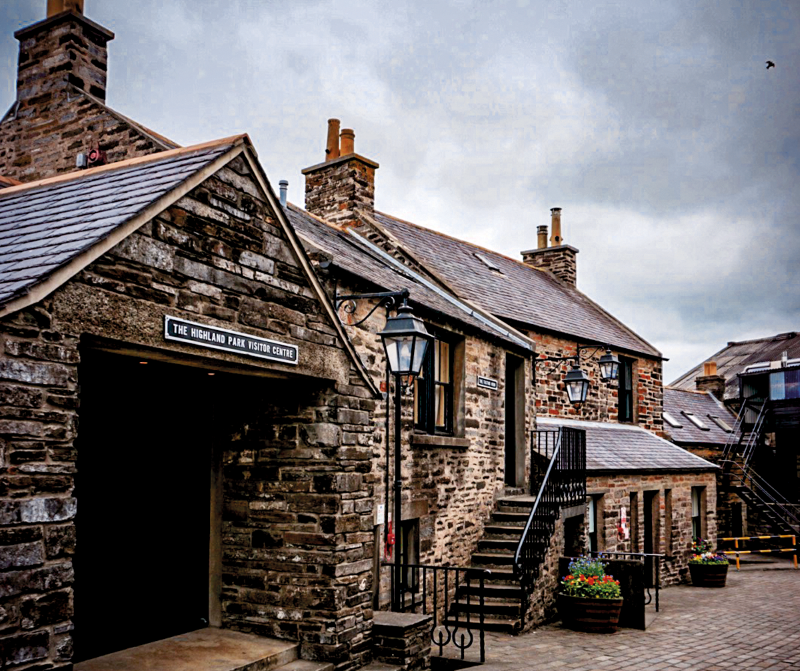
We invoke terroir today in all manner of food and drink, whether to praise the icy clarity of scallops from the Isle of Skye adorned with garlic petals or indulge in the sweetness of homegrown raspberries that layer the traditional Scottish dessert, Cranachan. For whiskies, peat, a natural burning material consisting of decomposed organic matter such as shrubs and mosses formed over thousands of years, teases out the nuances of provenance. In the woodless Hobbister Moor, Highland Park hand-rakes this 4,000-year-old energy source rich in fragrant heather, which gives rise to a floral aroma that differs from the phenolic, iodine-tinged peat on Islay.
“Wave upon wave of peat smokes our malted barley and imparts a distinctive profile. Because we are deeply bound to this wild landscape, we protect it by partnering with the Royal Society for the Protection of Birds to improve wetlands and use our peat more efficiently. We’re cutting down 30% less each year, taking only what we need,” said our distillery guide John while explaining the blueprint of this nature reserve with evangelical zeal.
Situated outside the five major whisky-making regions, Orkney loses out in numbers — it only has two distilleries, compared with Speyside which has 50; the Highlands, 30; and Islay, eight — but trumps in a decorative Norse history that colours its culture and character. Vikings, who arrived as invaders from the shores of Denmark and Norway in the 9th century but soon settled as farmers, traders and craftsmen, ruled the island from around 800 AD until 1468. As such, Highland Park honours its ancestral heritage in its core range aged in predominantly sherry casks, from the 10-year-old Viking Scars bursting with crushed citrus fruit and lightly whipped vanilla cream to the award-winning 18-year-old Viking Pride imbued with ripe cherries dusted with bittersweet cocoa.
highland_park_18.jpg

Wafts of malted barley swirled in the air as we stepped into the distillery, a smattering of stoic stone buildings that blend into Kirkwall’s countryside charm. Your sense of time and scale here may be warped: Its youngest kiln is still “new” at just over 100 years old, and warehouses are numbered from 1 to 25 even though there are only 23 of them. Walls in the tasting room are tiled with awards and certificates, proving that artistry and ambition, with a dash of mystery, contribute to a prize-making alchemy.
Chasing after a peated expression can be addictive, as if liquid gold seems incomplete without it. But it is not for everyone. Highland Park starts slow, coaxing the palate with honeyed undertones and delicate smokiness before introducing a sensory bonanza that erupts with notes like cinder toffee and soft fudge found in a full-bodied 25-year-old. Whiskies, like wine, are regularly tugged between preservation and development to clear the way for new visions. Visitors wishing to learn more can sign up for any five of Highland Park’s distillery experiences, the most in-depth being the “Rare and Exclusive” at £1,300 (RM7,700, highlandparkwhisky.com). It includes an expertly tutored tasting of its 30- and 40-year-old releases before a fireplace in Eunson’s room, as well as a sampling of the single cask of 46-year-old whisky that has never been released for sale.
Edge of the world
Dwarfed by neighbouring cities such as the cosmopolitan Edinburgh or artistically eclectic Glasgow, Orkney’s reputation does not immediately jump off the page. But any inferiority complex brought about by the lack of attention is immediately quashed when you stand blissfully alone atop the Yesnaby Cliffs, formed by fossilised stromatolites, battered sea stacks and blowholes. This restless drama of wind, sky and sparkling cobalt water below has long set the scene for a story about a female healer having the ability to stop bleeding in any person. That may be folklore but the scenery is no myth — gulls squawking plaintively above and the heady smell of salt in the air feel meditative, especially when you are drinking in the view with a dram in hand.
stenness.jpg
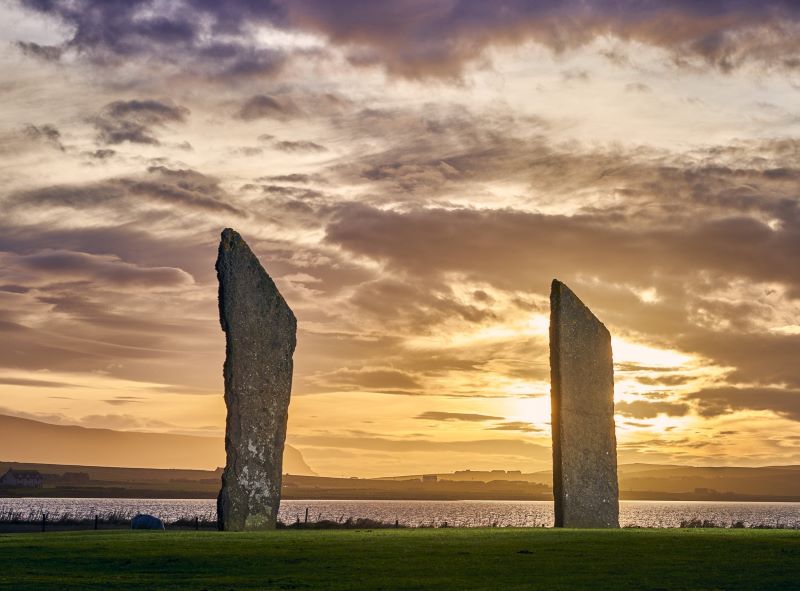
From time to time, rolling sheep pastures and prehistoric structures punctuate the island’s monochrome aesthetic, which slips from grey to grey. Pointing majestically skyward are the Stones of Stenness, a circle of Neolithic formation on an ancient ceremonial site that hints at what may be the earliest henge monument in the British Isles 5,000 years ago. One of the monoliths, known as the Odin Stone, was pierced with a circular hole for couples to make promises, or “Vow of Odin”, by holding hands through the gap. However, an immigrant named Captain W Mackay destroyed it on the grounds that local people were trespassing, causing the stone to fall and topple others. It was later reconstructed in 1906.
Though thinly populated with just 22,000 people, Orkney outweighs bigger burghs with a sense of pride forged by a strong band of artists. Just a — pardon the pun — stone’s throw from Stenness is Harray Potter, a ceramic store unrelated to the wizarding world that still injects its own creative magic into every pot and plate. A casual 30-minute drive will point you to Sheila Fleet Jewellery, a former church that has been renovated to house a gemstone gallery and the pet-friendly Kirk Café, surrounded by stained glass windows and old pews as seats. Daily specials are displayed on an original hymn board, tempting the famished with Bere Benedict (bread made from beremeal, an ancient type of barley) and a side of the local butcher’s ham.
sheila_fleet_jewellery.jpg
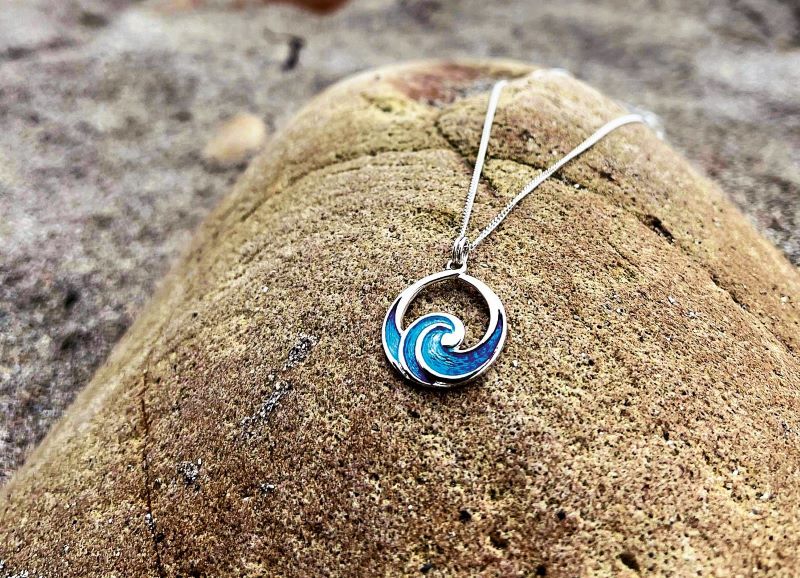
A reverence for heritage and culture has incubated the careers of a small colony of artisans who hold onto tradition with quiet determination in Kirkwall town centre, dominated by a spider web of shopping passageways, including Albert Street, Broad Street and Laing Street. Make a beeline for knitted garments and textiles at Hume Sweet Hume; new and pre-owned vinyl at independent music store Grooves Records; as well as handmade furniture and home paraphernalia at The Longship, run by the same family who set up one of the earliest grocers and wine merchants in 1859. Archive Coffee just around the bend wins the congeniality prize for being a convivial hangout, especially when you need to rest your feet and refuel with an indulgent Snickers cupcake, black pudding eggs Benedict on toast and a trusty cuppa.
st-magnus-cathedral.jpg
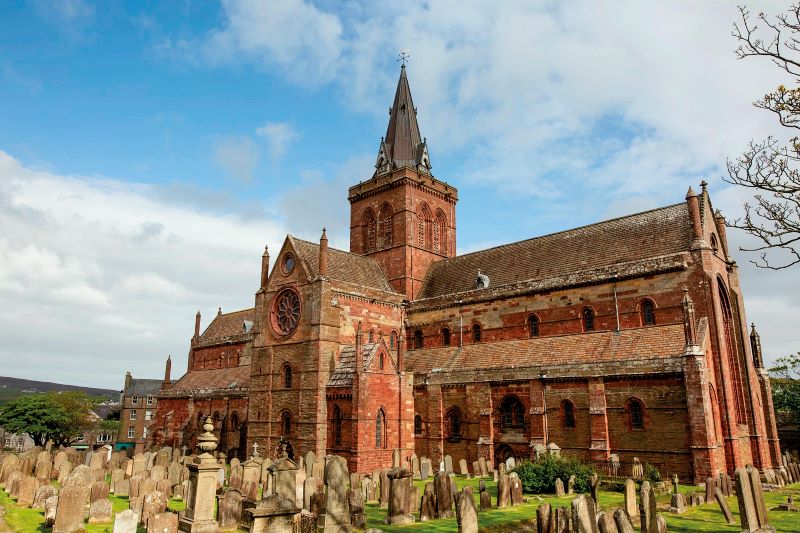
There is no shortage of caffeinated nooks to curl up with a good read but we found ourselves constantly drawn to the sun-dappled steps outside the Romanesque St Magnus Cathedral, the 12th-century parish church honouring Viking leader Earl Magnus. Abutting a quiet cemetery, this perfect epitome of Norman architecture invites book lovers to rest under its shaded wing screened by verdant trees or make a headrest out of its many warm benches. If you haven’t packed a literary companion, get a few recommendations from The Orcadian Bookshop nearby — there awaits some great fiction by homegrown authors that will ever so subtly alter your day and outlook on life.
Dusk provides an evening’s fill of entertainment. Silhouetted against the blaze, Kirkwall Pier provides a vantage point from which to observe the shifting townscape that emerges with the rise and fall of the sun. Once again, the small, tight-knit community of Orkney retires and gets ready to greet new travellers who sail its way tomorrow.
This article first appeared on July 3, 2023 in The Edge Malaysia.


